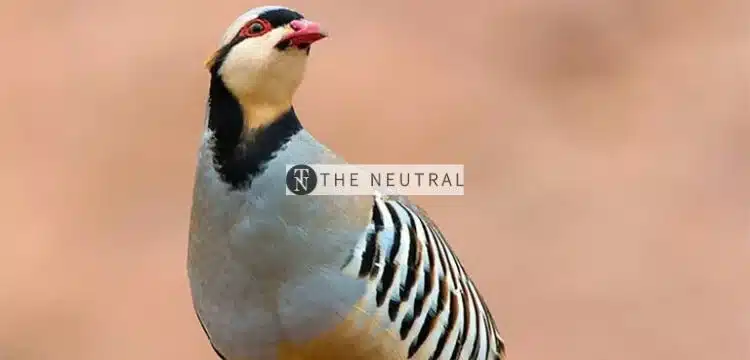[vc_row][vc_column][vc_column_text dp_text_size=”size-4″]The national bird of Pakistan, the Chakor or Chukar, holds a significant place in the country’s rich natural heritage.
Known for its distinctive appearance and unique behaviours, the Chukar is a fascinating bird species found in the rocky terrains of Pakistan.
In this article, we will explore the captivating world of the Chukar, shedding light on its physical characteristics, habitat, diet, breeding habits, and its symbolic representation as the national bird of Pakistan.
[ez-toc]
Overview of the Chukar:
The Chukar (Alectoris chukar) belongs to the pheasant family and is a medium-sized bird known for its vibrant plumage.
Native to the mountainous regions of Central Asia, the Chukar has earned its reputation as a popular game bird and a symbol of Pakistan’s natural heritage.
1. Interesting Facts about the Chukar:
- Chukars are highly gregarious birds, often seen in small flocks called coveys.
- They are known for their strong flying abilities and can quickly take off and maneuver through rocky terrain.
- Chukar populations have also been introduced in various other countries for hunting and as an ornamental species.
- In some regions, Chukars are bred in captivity for game hunting purposes.
- The Chukar has been featured in Pakistani literature, poetry, and folklore, further emphasising its cultural significance.
2. Physical Characteristics:
Chukars have a stout build with a length of around 32 to 35 centimetres.
They possess a distinctive red beak, red legs, and a greyish-brown body with intricate black and white markings on their wings.
The males have a black band across their eyes and a rich red bill, while females exhibit a more subdued appearance.
3. Habitat and Distribution:
Chukars are well-adapted to arid and rocky habitats, preferring steep slopes, rocky cliffs, and barren terrains.
In Pakistan, they are predominantly found in the northern regions, including Balochistan, Khyber Pakhtunkhwa, Gilgit-Baltistan, and Azad Kashmir.
4. Adaptations to Rocky Terrains:
The Chukar’s physical features make it highly adapted to rocky terrains. Its strong legs and powerful claws enable it to navigate steep slopes and find shelter in crevices.
Furthermore, their plumage blends well with the rocky surroundings, providing effective camouflage from predators.
5. Diet and Feeding Habits:
Chukars are omnivorous birds with a diverse diet. They primarily feed on seeds, grasses, leaves, and fruits.
In addition to vegetation, they also consume insects, snails, and small reptiles. Their ability to forage in arid environments gives them a distinct advantage in finding sustenance.
6. Breeding and Reproduction:
Chukars form monogamous pairs during the breeding season, which usually begins in spring.
The female constructs a shallow nest on the ground, hidden among vegetation or rocks. A clutch typically contains 10 to 20 eggs, which are incubated for about 23 to 25 days.
Once hatched, the chicks are precocial and can walk and feed independently shortly after birth.
7. Chukar’s Call:
The Recognizable Sound: One of the Chukar’s notable characteristics is its distinct call, which consists of a loud, repetitive “chukar-chukar” sound.
This vocalization serves multiple purposes, including maintaining contact with other members of the flock, defending territory, and attracting mates.
8. Symbolism and Cultural Significance:
In 1985, the Chukar was designated as the national bird of Pakistan due to its association with the rugged beauty of the country’s landscapes.
The bird symbolizes the nation’s resilience, adaptability, and its ability to thrive in challenging environments.
9. Conservation Efforts and Threats:
While the Chukar population is relatively stable, conservation efforts are essential to protect their habitats and ensure their long-term survival.
Threats include habitat loss due to human activities, hunting, and competition with introduced species.
Several organizations and governmental initiatives in Pakistan are actively working to conserve the Chukar and its ecosystem.
Conclusion:
The Chukar, Pakistan’s national bird, represents the country’s unique natural heritage.
With its striking appearance, adaptability to rocky terrains, and distinctive call, the Chukar captures the imagination of bird enthusiasts and symbolizes the nation’s resilience.
By understanding and appreciating the Chukar’s characteristics, habitat, and cultural significance, we can contribute to its conservation and ensure its legacy for future generations to cherish.[/vc_column_text][/vc_column][/vc_row]











